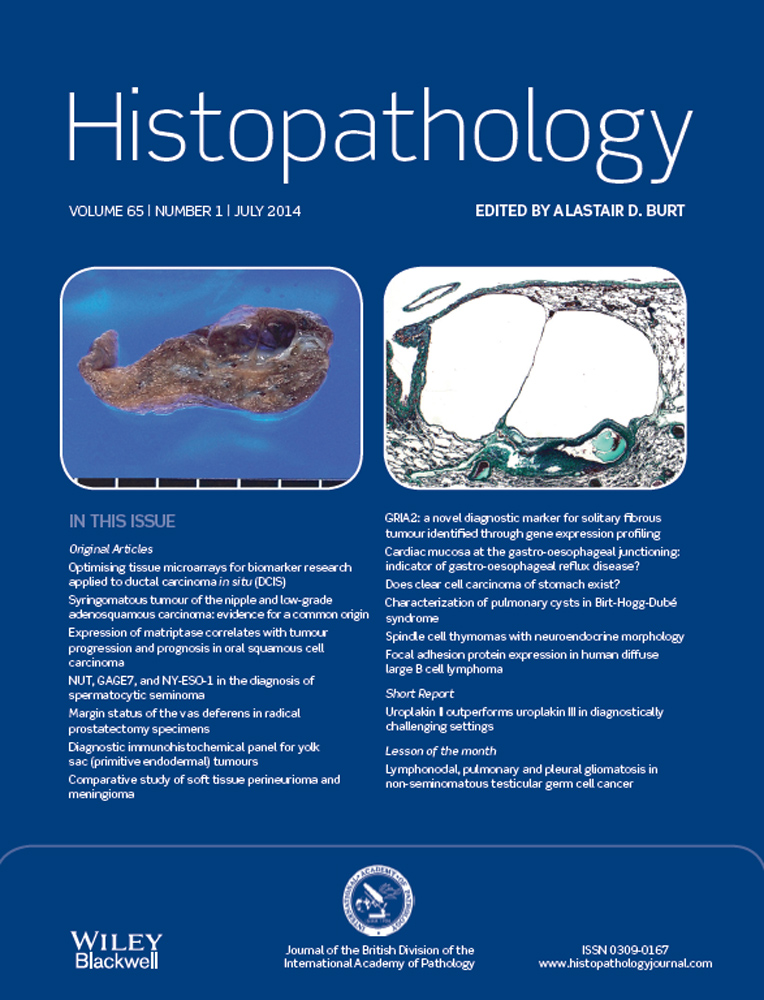Margin status of the vas deferens in radical prostatectomy specimens: relevant or waste of time?
Abstract
Aims
Positive surgical margins (PSM) after radical prostatectomy are of great interest, but investigation of the vas deferens (VD) is not recommended. This study examined the VD margins in radical prostatectomy patients to report the incidence of PSM and their clinical staging.
Methods and results
A total of 2701 consecutive specimens (1995–2009) were reviewed for tumour infiltration of the VD margin and correlated with clinicopathological data. Forty-one of 2701 cases (1.5%) had a positive VD margin. Thirteen cases had bilateral infiltration. All tumours were locally advanced [pT3a (n = 1), pT3b (n = 34), pT4 (n = 6)]; 15 (37%) had lymph node metastases. While Gleason scores ranged from 7 to 9, mean PSA was 22.3 ng/ml (1.68–127 ng/ml). In all cases with seminal vesicle infiltration (40 of 41) the PSM of the VD was seen ipsilaterally. In 11 of 15 patients (73%) with pN1 status, seminal vesicle infiltration and PSM of the VD were seen on the same side. In 16 cases (39%) the VD was the only PSM.
Conclusions
A PSM of the VD is an infrequent finding, but might appear as the only PSM. Histological evaluation of the VD therefore seems reasonable, especially as biochemical recurrence has been reported with positive VD margins, and awareness of them might assist in making clinical decisions for adjuvant therapy.




